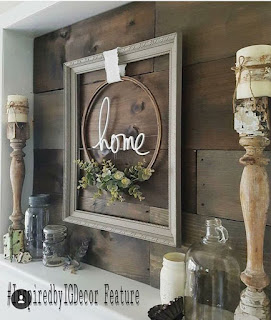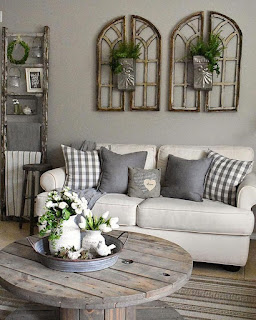DIY Woodworking Plans for Awesome Racks: Unleash Your Inner Carpenter!
Hey there, fellow woodworking enthusiasts! So you're looking to build your own racks? Fantastic! Whether you’re dreaming of a rustic wine rack, a sleek spice rack for your kitchen, a sturdy firewood rack for the patio, or even a super-organized tool rack for the garage, you've come to the right place. I'm going to walk you through some simple-to-follow plans for various types of racks, along with some tips and tricks to help you along the way. Get ready to unleash your inner craftsman!
The Classic Wine Rack: A Perfect Beginner Project
Let's start with a project that’s both rewarding and relatively straightforward: a simple wine rack. This is a great way to dip your toes into the world of woodworking if you're just starting out.
Materials You'll Need:
- Pine boards (1x6 or 1x8): Choose a nice, straight piece. The quantity will depend on the size of your rack.
- Wood glue:
- Wood screws (1 1/4" or 1 1/2"):
- Wood stain (optional):
- Polyurethane (optional):
- Sandpaper (various grits):
- Safety glasses:
- Measuring tape:
- Drill:
- Screwdriver bit (Phillips or square, depending on your screws):
Building the Rack:
- Cut the boards: Decide on the dimensions of your rack (height, width, and depth). Cut your boards to the necessary lengths. Remember to account for the width of the bottles you'll be storing.
- Create the bottle slots: This is where you get creative! You can either cut simple rectangular slots with a jigsaw, or use a router for a more refined look. For beginners, rectangular slots are definitely the easier route.
- Assemble the rack: Use wood glue and screws to attach the sides to the bottom and top pieces. Make sure everything is square and level before screwing it together.
- Sand and finish: Once the glue is dry, sand the rack smooth with sandpaper. If desired, apply a wood stain for color and then seal it with polyurethane for protection.
Pro Tip: Pre-drill pilot holes before screwing to prevent the wood from splitting.
Spice Rack: A Small Project with Big Impact
Next up, let's craft a stylish spice rack to organize your culinary treasures! This is a great project for using up leftover scraps of wood, making it incredibly budget-friendly.
Materials:
- Small pieces of hardwood (maple, cherry, or even oak scraps work great):
- Wood glue:
- Small brads or finish nails:
- Sandpaper:
- Wood finish (optional):
Construction:
- Cut the shelves: Cut several small shelves to fit your spice jars. You can make them simple rectangular shapes, or get a little fancier with rounded edges.
- Cut the sides: Cut two side pieces to support the shelves. These should be slightly taller than your shelves.
- Assemble: Glue and nail the shelves to the side pieces. Ensure even spacing between the shelves.
- Sand and finish: Once dry, sand everything smooth and apply a finish if you desire a more polished look.
Rustic Firewood Rack: A Sturdy Outdoor Project
Now for something a bit more substantial: a rustic firewood rack! This project will require slightly more advanced woodworking skills and tools, but the result is a beautiful and functional addition to your outdoor space.
Materials:
- Thick, sturdy lumber (pressure-treated for outdoor use):
- Heavy-duty screws or lag bolts:
- Drill:
- Level:
- Measuring tape:
Construction:
- Cut the legs and supports: Cut the lumber to create the legs and supporting beams for your rack. You can get creative here with different designs â€" A simple A-frame is an easy choice for a beginner
- Assemble the frame: Use screws or lag bolts to attach the legs and supports. Make sure the frame is sturdy and level.
- Add the slats: Cut and attach slats across the frame to hold the firewood. Leave enough space between the slats for airflow.
Tool Rack: Organize Your Workshop
Finally, let's talk about a tool rack â€" an absolute necessity for any organized workshop! This is another project where you can customize the design to fit your specific tools.
Materials:
- Wood of your choice (consider durability):
- Screws:
- Hooks (various sizes):
- Drill:
Construction:
- Design the layout: Plan out where you want to place your tools and what kind of storage you need (shelves, hooks, etc.).
- Cut and assemble: Cut your wood according to your plan and assemble the rack. Consider using dado joints or pocket hole joinery for strong connections.
- Attach hooks and shelves: Secure the hooks and shelves to the rack to hold your tools.
Commonly Asked Questions
Q: What type of wood should I use?
A: It depends on the project! Pine is a good choice for beginners because it’s inexpensive and easy to work with. For more durable projects, consider hardwoods like oak or maple.
Q: What tools do I need?
A: At minimum, you’ll need a measuring tape, saw (hand saw or circular saw), drill, screwdriver, and sandpaper. For more complex projects, you may need a jigsaw, router, or other power tools.
Q: How can I make sure my rack is sturdy?
A: Use strong screws or bolts, pre-drill pilot holes to prevent splitting, and ensure all joints are tight and secure. Consider using wood glue in addition to fasteners for extra strength.
Q: Can I stain or paint my rack?
A: Absolutely! Staining or painting can add a nice finishing touch and protect the wood from damage.
There you have it! Four fantastic DIY rack projects to get you started on your woodworking journey. Remember, the most important thing is to have fun and be patient. Don’t be afraid to experiment and make it your own! Happy building!



























